I was in Minnesota, it was Christmas, and I was stuffing as much lefse in my piehole as possible. If you are not a Scandinavian squarehead like me, you have no idea what you’re missing. Lefse is potatoes that have gone to heaven. Imagine a gigantic tortilla, but made with potatoes; lefse is so soft and delicate you absorb it rather than swallow it.
There may be other ways to serve lefse, but I am satisfied with lefse at its most simply delicious: gently heated, smeared with butter, sprinkled with cinnamon and sugar, and rolled up like an empty burrito. Two or three bites and it’s gone and I’m already prepping the next disc of potato dough.
I hear (but don’t believe) that there are people who make their own lefse, which involves ten pounds of potatoes, a potato ricer, a lefse rolling pin, and a special wooden stick to flip them from one side to the other on the griddle. You can also buy them ready-to-eat at any Minnesota supermarket, which is the recipe I recommend.
If you are Swedish, you are Lutheran; one of the 95 theses was “Thou Shall Raise Money for the Church with Lefse and Lutefisk Suppers.” Lutefisk is in the same family as bacalao and brandade: a poor, innocent cod is dried, salted, and hardened until it could pass as plasterboard, then reconstituted. Norwegians like me, thank God, are Catholics.
To my shock, I have met younger Minnesotans who have never known the comfort of a warm lefse. I fear in a generation or two, lefse may become a Forgotten Food (as lutefisk should).
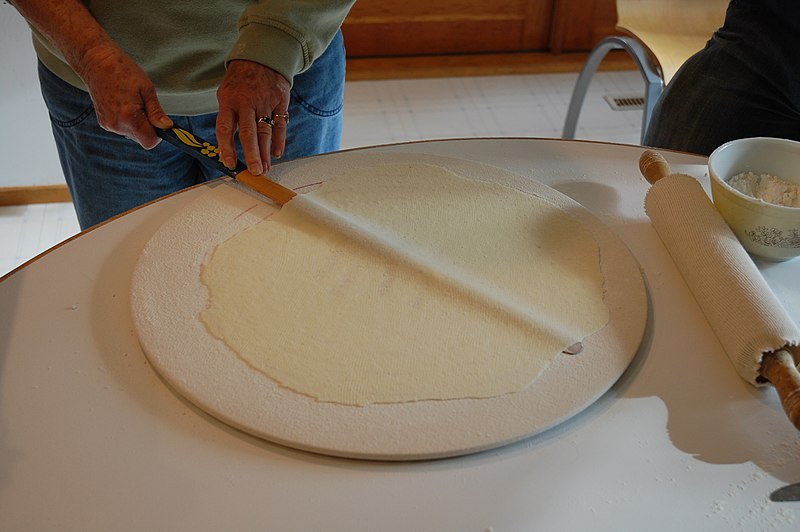
Ambrosia salad has passed into the mists of forgotten foods. I was in one of the glorious, wide-aisled, brightly lit, sparkling clean, if-you-want-it-we-have-it food emporiums of the Midwest, my shopping cart piled with lefse. I stopped dead in my tracks when I spotted a can of Geisha mandarin oranges; that can was a time machine that took me back to when I was a kid in Duluth, Minnesota. The Geisha mandarin oranges label has not changed in half a century: a vaguely Art Deco drawing of a Japanese woman blankly peering out over her fan, standing in front of what could be either an orange or an off-color rising sun.
Canned mandarin oranges, coconut, pastel-colored Kraft mini-marshmallows, and a container of Cool Whip, none of which belongs in a salad, is what goes into ambrosia. (You can throw in canned crushed pineapple if you want a sweeter salad). When I was growing up, ambrosia was a Dr. and Mrs. Haubner dinner party staple. If I brought a bowl of ambrosia salad to a potluck in these more enlightened times, I’d be given the bum’s rush out the door with the bowl tossed after me.
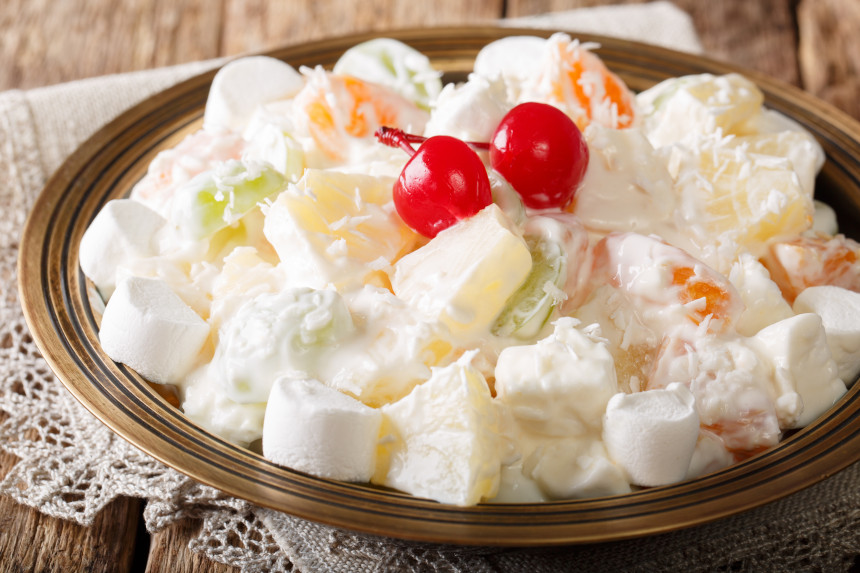
My mother was born in Aberdeen, South Dakota, a dot on the map known for…well, nothing really. Serving a dish that contained coconut was a sign that she had arrived at a level of sophistication undreamt of in her hometown, a hamlet so firmly stuck in the past that the big excitement was the Saturday evening brass band in the town park.
Canned water chestnuts were equally exotic; they got wrapped in bacon (but what doesn’t want to be wrapped in bacon?), doused with soy sauce, skewered with frilly toothpicks, and passed around at parties to soak up the Tom Collinses and Old Fashioneds my father was generously pouring.
On dinner party nights, we kids were fed at five and hustled off to the television, not to be seen or heard. This was not a hardship: my sister and I adored TV dinners, Swanson pot pies, and Chun King chicken chow mein — Chinese food that came in not one but two cans. The big can held mostly bean sprouts and a teaspoon of what may have been chicken, the smaller can had crunchy chow mein noodles to sprinkle on top.
This ersatz Chinese dish was the invention of one of Duluth’s favorite sons, Jeno Palucci. How an Italian became the leader in canned Chinese food is a mystery. Italians were so thin on the ground in Duluth that garlic was a powder, Parmesan cheese was salty sawdust in a cardboard canister, and everyone thought pizza was pronounced without a “t,” like “jazz” or “pizzazz.”
Similar to Mr. Reese, Mr. Palucci had a wild brainstorm about encasing one food in something completely different. Thus we have Jeno’s Pizza Rolls, the marriage of pizza and egg roll.
If a pizza roll sounds delicious, rest assured you still have the opportunity to get second degree burns on the roof of your mouth biting into a boiling mess of red sauce and cheese, even though the Jeno’s brand has passed into the realm of forgotten foods.
Like my mom, I was enamored of anything that went beyond the stick-to-your-ribs meat/potato/veg that made up 99 percent of Minnesota suppers. One Christmas I selfishly gave my mother a fondue pot; I was charmed by the skinny forks, each with a different colored end so you knew which fork was yours, and visions of chocolate fondue danced in my head. We did have a single experiment with cheese fondue, which resulted in much melted cheese on the tablecloth, a to-the-death fondue fork duel between me and my sister, and the kitchen stinking of Sterno. The fondue pot and the deadly forks were banished to above the cabinets, where they gathered dust for ten years, half the forks vaporized, and what was left sold for a dollar at a garage sale.
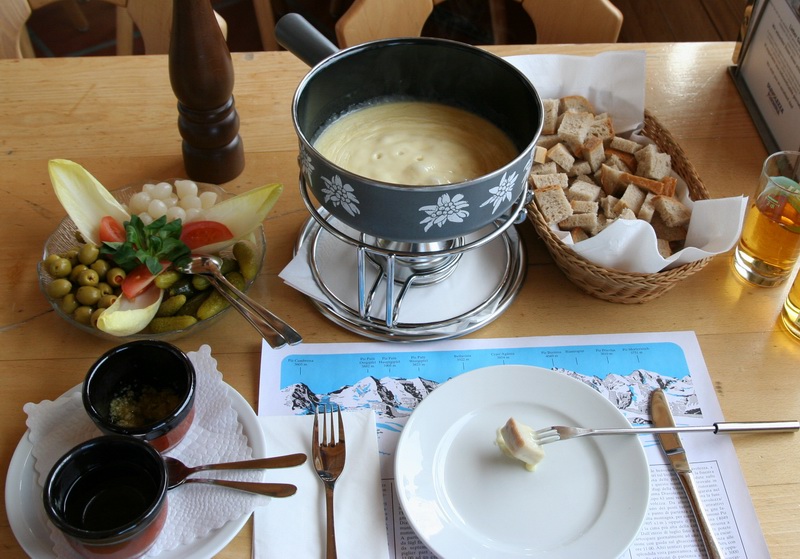
There were a few depression-era foods my mother clung to. Because of my hair-trigger gag reflex, creamed chipped beef and tuna noodle hot dish topped with potato chips were both off the menu.
Mom doted on a breakfast of fried cornmeal mush with a generous pour of sweet corn syrup. The only place I have ever seen this served was in the big city of Minneapolis at the grand, two-story Forum Cafeteria, a black and chrome Art Deco shrine to freedom of choice. As a child, I loved cafeterias, resting my chin on the tray as I glided it along the rails, waiting to get to the dazzling display of desserts, wishing I could get every one except the wedge of apple pie topped (why?) with yellow cheese. My freshman dorm cafeteria was, with the exception of the soft serve machine, a sad disappointment. Non-school cafeterias may have also passed into Forgotten Foods.

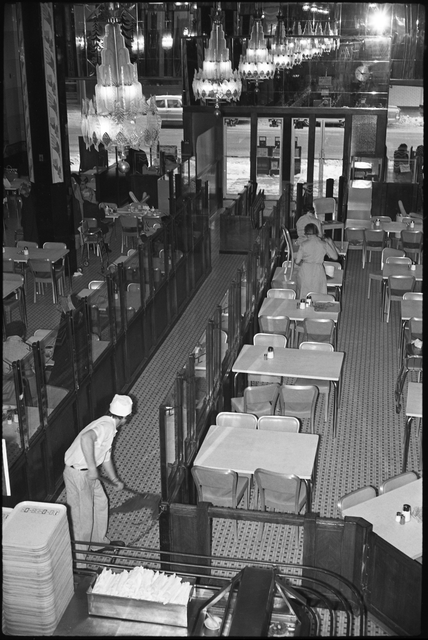
There was another dish my mother couldn’t give up. Too often in the winter months, coming in from the cold and dark, I would unwrap my scarf from my face and be assaulted by the smell of boiled dinner. A boiled dinner is exactly as advertised: carrots, onions, cabbage, a bay leaf (from the red and white McCormick tin that was in my mother’s cupboard until I tossed it after she died), and a piece of meat bound up in string netting were dropped into a pot of water and boiled until the house was permeated with the scent of pre-war Eastern Europe. The saving grace was that boiled dinner had to be eaten with thickly sliced and buttered brown bread that came in a can. Only B&M makes this delicacy and Walmart has it for $2.22 a can. Boiled dinner optional.
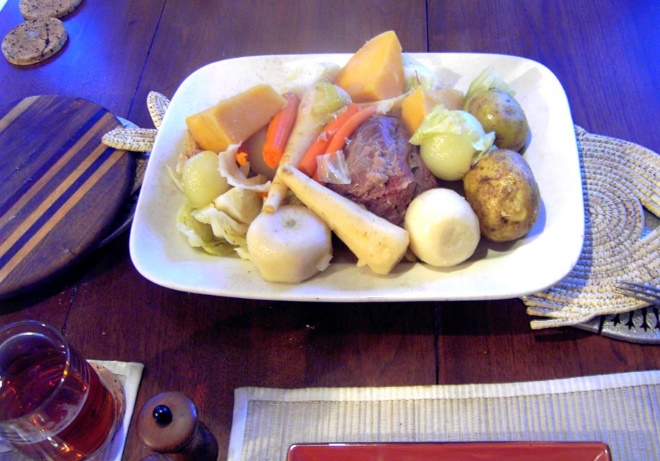
Many of the Forgotten Foods are frozen treats. Gone are the double Popsicles, always split in two and shared (what kind of monster would eat a whole Popsicle?). The flavors were orange, red, and purple; for hours afterwards there would be a tell-tale ring around your lips. There was also the rarely seen banana, my favorite as it tasted nothing like banana or anything I can name; it’s an impossible flavor to describe. Once digging through a store’s chest freezer, I found a chocolate Popsicle, which became my unicorn, my black swan. Dreamsicles are gone too, vanilla ice cream coated with orange or pink (raspberry?) sherbet on a stick. Everything tastes better on a stick.

There are New York City foods I met as a wide-eyed newbie that have also passed into oblivion. I don’t remember the last time I saw a street cart selling roasted chestnuts, which smelled better than they tasted. Chestnuts, candied fruit, and booze go into a creamy Nesselrode pie, which I had never heard of until I moved to NYC. When I got here, Nesselrode pie and charlotte russe (ladyfingers and custard) were served at every diner and coffee shop; by the 1990s they had vanished. Enough has been written about the nostalgia-inducing and mislabeled egg cream. Today I would have to take the subway deep into Brooklyn to find a decent chocolate egg cream (making your own at home with club soda, milk, and Hersey’s syrup is a fail).
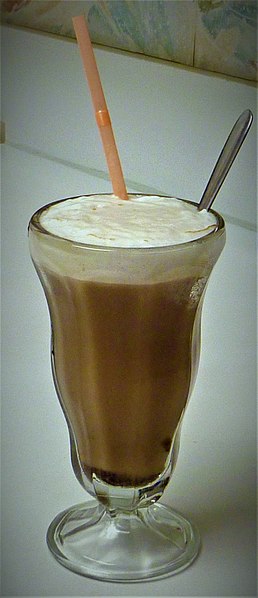
I still grieve that I never got to drop a coin in a slot and pull out a bowl of baked beans at an automat. In 1991 I read in the New York Times that the last one was going out of business. I decided to take my three-and four-year-old sons so we could all experience an automat for the first and final time. In my exhausted, always-on-my-last-nerve state of toddler motherhood, we arrived the day after the automat on 34th Street had closed forever.
Food is life and food is love, and some beloved foods may be forgotten in kitchens and restaurants, but they live on in my best memories. There I am, sweaty and dusty on a sweltering South Dakota afternoon, my head swimming after an hour of being gyrated by my cousins on the playground merry-go-round, clutching a dime in my grubby hand, standing at the snack bar hoping there might be pink Dreamsicles, not just orange.
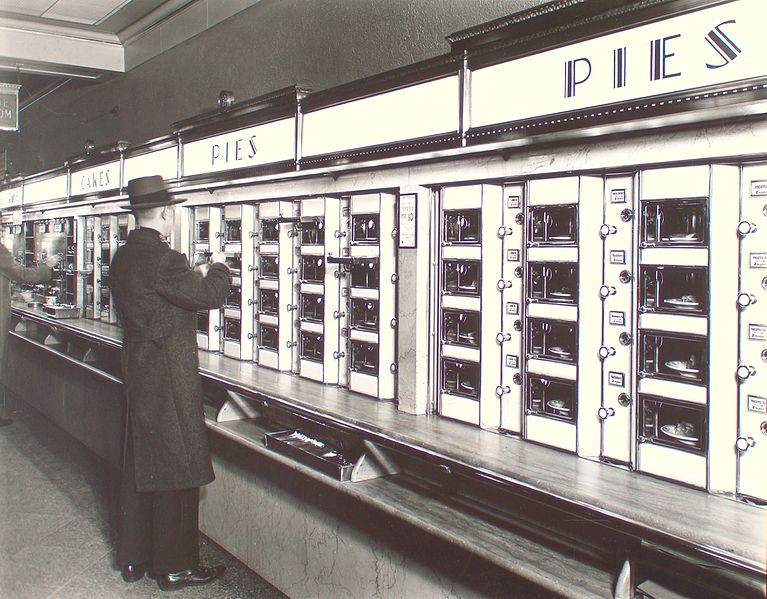
There I am, in front of the Gem Spa soda fountain in the scruffy East Village, on the corner of Second and what is now known as Joey Ramone Place, with my angsty artist boyfriend, falling in love with New York and each other over egg creams, made with icy, almost-frozen milk and shaken not stirred.
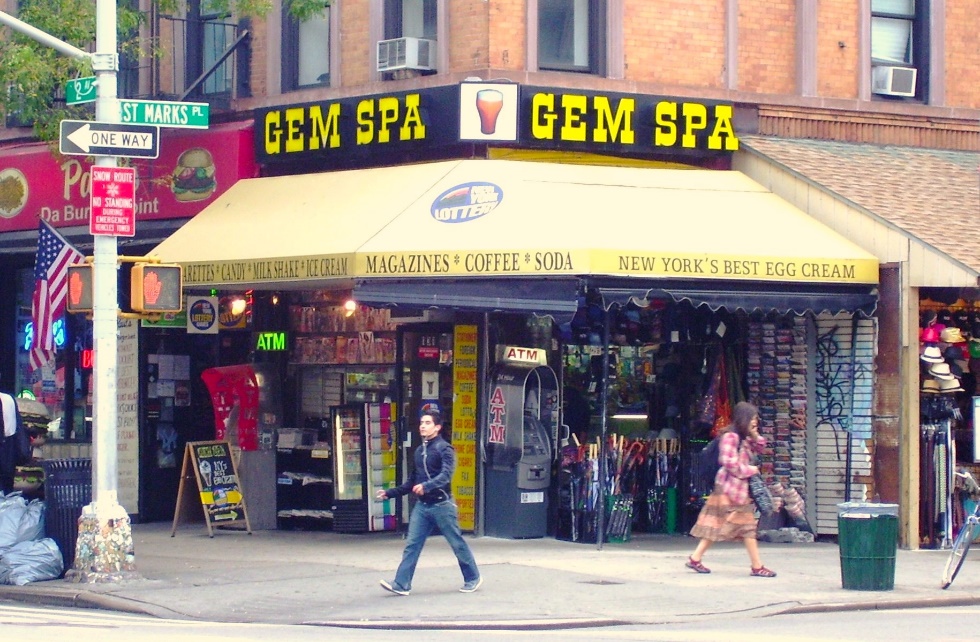
And there is my mother at the Forum Cafeteria, tucking into breakfast before a big day of shopping at Dayton’s and Donaldson’s and Harold’s, holding a forkful of fried cornmeal mush to her Cherries in the Snow lips, inhaling the toasty, sweet scent, returning to her own prairie childhood. Me, I’m eating a waffle like a normal person.
Featured image: Chocolate egg cream (Lkapit via the Creative Commons Attribution-Share Alike 4.0 International license, Wikimedia Commons)
Become a Saturday Evening Post member and enjoy unlimited access. Subscribe now

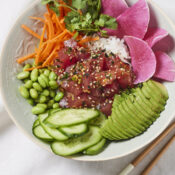
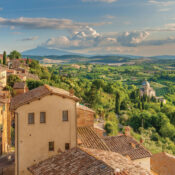

Comments
Gay, I tremendously enjoyed this article on forgotten foods. Just wanted you to know that Ambrosia is alive and well in Texas. Not a spoonful is left when my wife serves it up. We add pecans and Eagle Brand milk for the Texas touch. Also, I believe LaChoy (rather than Chun King) still makes those bi-pack Chinese dinners. After reading your article I’m asking my wife for a boiled dinner. It sounds perfect for this winter weather.
As always I can see it and this time, almost taste it because of your wonderful writing. I feel like I was there! Thank you for a sensational read.
You forgot about “Cherry Phosphates”… otherwise an absolutely wonderful article that had nostalgia swimming in my mind like an Olympic Breaststroke
There is a YouTube channel that goes through old mid-century cookbooks and makes some of these hideous recipes. It’s called Recipe Archeology. They’re really funny, check it out here: https://www.youtube.com/c/RecipeArchaeology
I discovered lefse at Epcot a few years back. It was heaven. I have tried several times to make them at home. Most are edible, but none are truly good.
I miss pudding pops. It was a fudgesicle only better.
https://www.convenience.org/Media/Daily/2021/Apr/6/3-Revived-Automats-Safer-Food-Experience_Tech
It appears the automat is making a covid comeback!
Buitoni produced Popeye Spinach Macaroni circa 1960-1970, & it is historically my favorite spinach pasta. I wish they would resurrect it so I can keep buying cases of it.
Gay, always a pleasure to read what you say, and the way you say it! I agree with Janet’s comments hinting at a future “candy edition”. If that includes desserts, than include them. Treat your family like company, and your company like family!
Once again I got a kick out of your mother! I happen to love ambrosia too. Mom had good taste and I’m sorry if people today would throw such a wonderful potluck bowl out the door. That shows how UN-enlightened these neurotic times are. Up to late 2019 I loved the ambrosia that was part of The Sizzler’s salad bar, with all kinds of decadent cookies & cream desserts and more. All but a memory now.
Since re-opening beyond just take-out only, the salad bar is more expensive and very spartan; very. I’m telling you, from here on out when something is “back” it won’t be as good, and a lot more expensive. Anyway, I’ve burned the roof of my mouth too on Jeno’s (now Totino’s) pizza rolls. One of those rare times in life where the pain is just part of the eatin’ pizza rolls experience. But do wait a few minutes after taking them out of the oven. Seriously.
My Mom served Chung King out of the can too, proclaiming “We’re having Chinese food for dinner tonight kids. Put your bikes away, and wash your hands.” It was good enough, for back then. I liked the Swanson TV dinners when the potatoes were the round ‘tater tot’ kind. Fish sticks were the best on Friday nights on the sheet tray slightly burned, with ketchup. Catholics did not eat meat on Fridays. Even today, if I’m going to have fish, it’s on Fridays.
My father, a Danish immigrant, and I used to go to the Danish club in Redford, Michigan so he could feast on lutefisk. I, on the other hand, hated it but I loved being with my dad. We used to dance with me standing on his toes!
After several years of suffering through the lutefisk dinner I found out that I could have asked for steak.
I remember eating Chun King and listening to the Green hornet at the kitchen table.
Thank you for the memories
My wife of Norwegian heritage and raised Lutheran still makes lefse every Christmas with her sisters. It is a family tradition. They do not make lutefisk, however. Rather, they make several hundred Norwegian meatballs for the extended Christmas family dinner. So it is not a lost art yet, anyway.
Thanks for the interesting article. I’ve eaten all of the food you wrote about, except the egg cream. I’ll have to attempt that.
The great news is that Walmart still carries “Blue Ribbon Classics Orange Dream Frozen Treat Bar”, and they’re just as delicious as remembered, if a bit smaller. My grandkids and I love them.
Always fun, nostalgia, and a hint of mischief. Was hamhocks and green beans not a thing in Duluth? I haven’t had them, or heard about them even, in forever. And, i am eager about the “candy edition”!!